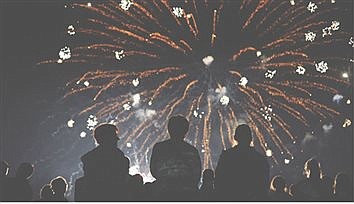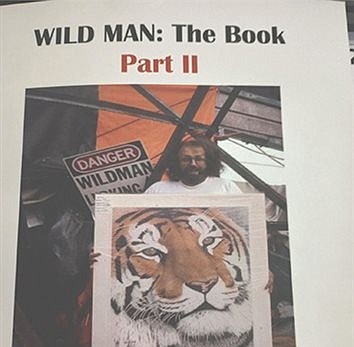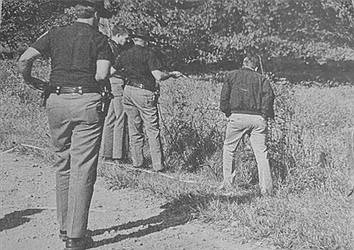Whistleblowers testify about UAPS
August 2, 2023 at 12:30 a.m.

Late last year, the Senate passed a bill that required U.S. intelligence agencies to share what they know about Unidentified Aerial Phenomena (UAP), the technical term for UFOs. The Office of the Director of National Intelligence released an unclassified report last week, "Preliminary Assessment: Unidentified Aerial Phenomena." Although the assessment doesn't confirm the existence of alien spacecraft, it doesn't rule them out either. It states the ability to draw firm conclusions is limited due to a lack of high-quality reporting on UPA. Unidentified Aerial Phenomena Task Force (UAPTF) considered a range of information on UPA, focusing on reports occurring between 2004 and 2021, primarily witnessed firsthand by military aviators from reliable systems.
•There were 144 reports of UAP. Eighty of the reports involved observation that registered across multiple sensors like infrared, electro-optical, radar, weapon seekers, and visual observation.
•Some UAPs appear to demonstrate advanced technology. In 18 incidents described in 21 reports, observers reported unusual UAP movement patterns or flight characteristics, like appearing to remain stationary in winds aloft, moving against the wind, maneuvering abruptly, or moving at considerable speed without discernable means of propulsion.
Ultimately the assessment determined explaining UAP will require standardizing the reporting, solidating the data and deepening the analysis.
The House Oversight Committee held a hearing titled "Unidentified Anomalous Phenomena: Implications on National Security, Public Safety, and Government Transparency" on Wednesday, July 26. Unidentified UFOs sightings have fueled a debate for decades, "Is there life in outer space?" The House Oversight Committee hoped to receive some clarity on the widely speculated topic.
Chairman Glenn Grothman (R-Wis.) delivered opening remarks at the hearing.
“I'd like to thank the brave military pilots and personnel, such as the witnesses on the panel today, for sharing their stories on how they have engaged UAPs, which has brought attention to this matter," Grothman said in his opening statement. "Curiosity and speculation among people from all walks of life have generated interest in studying what UAPs are and what threats they pose. I personally have had an interest in this topic since Frank Edwards published his 1966 book Flying Saucers – Serious Business.
However, the lack of transparency surrounding UAPs has fueled wild speculation and debate for decades, eroding public trust in the very institutions that are meant to serve and protect them."
The witnesses who testified are former intelligence community official David Grusch, who claims the federal government has found alien vessels; David Fravor, a former commanding officer in the U.S. Navy and Ryan Graves, executive director of Americans for Safe Aerospace.
In closing, Grothman stated, "We must demand transparency from the Department of Defense, our Intelligence Community, and our defense industry on their UAP work. Congress recognizes that the subject of UAPs is multifaceted and requires a careful, data-driven approach.
Today, we will seek clarity from these witnesses' testimonies as to what can be done to improve reporting for the military and civilians and remain committed to objective inquiry. Congress should work to ensure that knowledge is not driven by fear, sensationalism, or unfounded assumptions but by dedication to scientific rigor.
Today, we are not just debating the existence of UAPs; we are deliberating on the principles that define our republic, which is a commitment to transparency and accountability."
Grusch claimed that the U.S. government has a secret UFO retrieval program. His colleagues informed him that the program had recovered "non-human" spacecraft and "dead pilots" from UFO crashes. Other officials who worked with Grusch on the UAP Task Force corroborated what Grusch said.
"I was informed in the course of my official duties of a multi-decade UAP crash retrieval and reverse engineering program to which I was denied access," he said. Grusch also said the U.S. likely has been aware of "non-human" activity since the 1930s.
In addition to Grusch, the panel heard testimony from Ryan Graves, a former Navy pilot who has spoken out about encountering UAPs on training missions, and David Fravor, who spotted a large object captured in the now-famous "Tic Tac" video during a flight off the coast of California in 2004.
All three witnesses said that current reporting systems are inadequate to investigate UAP encounters and that a stigma still exists for pilots and officials who press for more transparency about their experiences.
Graves was an F-18 pilot stationed in Virginia Beach in 2014 when his squadron first began detecting unknown objects. He described them as "dark grey or black cubes … inside of a clear sphere, where the apex or tips of the cubes were touching the inside of that sphere."
He said a fellow pilot told him about one incident about 10 miles off the coast, in which an object between 5 and 15 feet in diameter flew between two F-18s and came within 50 feet of the aircraft. He said there was no acknowledgment of the incident or way to report the encounter at the time.
UAP encounters, he said, were "not rare or isolated."
“If everyone could see the sensor and video data I witnessed, our national conversation would change," Graves said. "I urge us to put aside stigma and address the security and safety issue this topic represents. If UAP are foreign drones, it is an urgent national security problem. If it is something else, it is an issue for science. In either case, unidentified objects are a concern for flight safety. The American people deserve to know what is happening in our skies. It is long overdue."
Fravor recounted his 2004 encounter with an object off the California coast. He told the subcommittee that he and another pilot spotted the smooth, seamless oval-shaped object hovering over the water before it rapidly climbed about 12,000 feet in the air. It then accelerated and disappeared. It was detected roughly 60 miles away less than a minute later. Fravor returned to an aircraft carrier and mentioned the object to other pilots who were getting ready to take off, and they managed to get it on video.
"I think what we experienced was, like I said, well beyond the material science and the capabilities that we had at the time, that we have currently or that we're going to have in the next 10 to 20 years," Fravor said.
The Pentagon has denied Grusch's claims of a coverup. In a statement, Defense Department spokeswoman Sue Gough said investigators have not discovered "any verifiable information to substantiate claims that any programs regarding the possession or reverse-engineering of extraterrestrial materials have existed in the past or exist currently."
Entities established to examine UAPs
The National Defense Authorization Act of Fiscal Year 2022 established the All-Domain Anomaly Resolution Office, or AARO, to coordinate efforts across the Department of Defense and other federal agencies to detect, identify, and investigate UAPs. However, AARO's budget remains classified, prohibiting meaningful oversight from Congress.
In addition to AARO's efforts, NASA is leading an independent study on UAPs that will identify how UAP data is gathered from both civilian and government entities that can be analyzed to shed light on the topic.
Latest News
E-Editions
Events
Late last year, the Senate passed a bill that required U.S. intelligence agencies to share what they know about Unidentified Aerial Phenomena (UAP), the technical term for UFOs. The Office of the Director of National Intelligence released an unclassified report last week, "Preliminary Assessment: Unidentified Aerial Phenomena." Although the assessment doesn't confirm the existence of alien spacecraft, it doesn't rule them out either. It states the ability to draw firm conclusions is limited due to a lack of high-quality reporting on UPA. Unidentified Aerial Phenomena Task Force (UAPTF) considered a range of information on UPA, focusing on reports occurring between 2004 and 2021, primarily witnessed firsthand by military aviators from reliable systems.
•There were 144 reports of UAP. Eighty of the reports involved observation that registered across multiple sensors like infrared, electro-optical, radar, weapon seekers, and visual observation.
•Some UAPs appear to demonstrate advanced technology. In 18 incidents described in 21 reports, observers reported unusual UAP movement patterns or flight characteristics, like appearing to remain stationary in winds aloft, moving against the wind, maneuvering abruptly, or moving at considerable speed without discernable means of propulsion.
Ultimately the assessment determined explaining UAP will require standardizing the reporting, solidating the data and deepening the analysis.
The House Oversight Committee held a hearing titled "Unidentified Anomalous Phenomena: Implications on National Security, Public Safety, and Government Transparency" on Wednesday, July 26. Unidentified UFOs sightings have fueled a debate for decades, "Is there life in outer space?" The House Oversight Committee hoped to receive some clarity on the widely speculated topic.
Chairman Glenn Grothman (R-Wis.) delivered opening remarks at the hearing.
“I'd like to thank the brave military pilots and personnel, such as the witnesses on the panel today, for sharing their stories on how they have engaged UAPs, which has brought attention to this matter," Grothman said in his opening statement. "Curiosity and speculation among people from all walks of life have generated interest in studying what UAPs are and what threats they pose. I personally have had an interest in this topic since Frank Edwards published his 1966 book Flying Saucers – Serious Business.
However, the lack of transparency surrounding UAPs has fueled wild speculation and debate for decades, eroding public trust in the very institutions that are meant to serve and protect them."
The witnesses who testified are former intelligence community official David Grusch, who claims the federal government has found alien vessels; David Fravor, a former commanding officer in the U.S. Navy and Ryan Graves, executive director of Americans for Safe Aerospace.
In closing, Grothman stated, "We must demand transparency from the Department of Defense, our Intelligence Community, and our defense industry on their UAP work. Congress recognizes that the subject of UAPs is multifaceted and requires a careful, data-driven approach.
Today, we will seek clarity from these witnesses' testimonies as to what can be done to improve reporting for the military and civilians and remain committed to objective inquiry. Congress should work to ensure that knowledge is not driven by fear, sensationalism, or unfounded assumptions but by dedication to scientific rigor.
Today, we are not just debating the existence of UAPs; we are deliberating on the principles that define our republic, which is a commitment to transparency and accountability."
Grusch claimed that the U.S. government has a secret UFO retrieval program. His colleagues informed him that the program had recovered "non-human" spacecraft and "dead pilots" from UFO crashes. Other officials who worked with Grusch on the UAP Task Force corroborated what Grusch said.
"I was informed in the course of my official duties of a multi-decade UAP crash retrieval and reverse engineering program to which I was denied access," he said. Grusch also said the U.S. likely has been aware of "non-human" activity since the 1930s.
In addition to Grusch, the panel heard testimony from Ryan Graves, a former Navy pilot who has spoken out about encountering UAPs on training missions, and David Fravor, who spotted a large object captured in the now-famous "Tic Tac" video during a flight off the coast of California in 2004.
All three witnesses said that current reporting systems are inadequate to investigate UAP encounters and that a stigma still exists for pilots and officials who press for more transparency about their experiences.
Graves was an F-18 pilot stationed in Virginia Beach in 2014 when his squadron first began detecting unknown objects. He described them as "dark grey or black cubes … inside of a clear sphere, where the apex or tips of the cubes were touching the inside of that sphere."
He said a fellow pilot told him about one incident about 10 miles off the coast, in which an object between 5 and 15 feet in diameter flew between two F-18s and came within 50 feet of the aircraft. He said there was no acknowledgment of the incident or way to report the encounter at the time.
UAP encounters, he said, were "not rare or isolated."
“If everyone could see the sensor and video data I witnessed, our national conversation would change," Graves said. "I urge us to put aside stigma and address the security and safety issue this topic represents. If UAP are foreign drones, it is an urgent national security problem. If it is something else, it is an issue for science. In either case, unidentified objects are a concern for flight safety. The American people deserve to know what is happening in our skies. It is long overdue."
Fravor recounted his 2004 encounter with an object off the California coast. He told the subcommittee that he and another pilot spotted the smooth, seamless oval-shaped object hovering over the water before it rapidly climbed about 12,000 feet in the air. It then accelerated and disappeared. It was detected roughly 60 miles away less than a minute later. Fravor returned to an aircraft carrier and mentioned the object to other pilots who were getting ready to take off, and they managed to get it on video.
"I think what we experienced was, like I said, well beyond the material science and the capabilities that we had at the time, that we have currently or that we're going to have in the next 10 to 20 years," Fravor said.
The Pentagon has denied Grusch's claims of a coverup. In a statement, Defense Department spokeswoman Sue Gough said investigators have not discovered "any verifiable information to substantiate claims that any programs regarding the possession or reverse-engineering of extraterrestrial materials have existed in the past or exist currently."
Entities established to examine UAPs
The National Defense Authorization Act of Fiscal Year 2022 established the All-Domain Anomaly Resolution Office, or AARO, to coordinate efforts across the Department of Defense and other federal agencies to detect, identify, and investigate UAPs. However, AARO's budget remains classified, prohibiting meaningful oversight from Congress.
In addition to AARO's efforts, NASA is leading an independent study on UAPs that will identify how UAP data is gathered from both civilian and government entities that can be analyzed to shed light on the topic.





